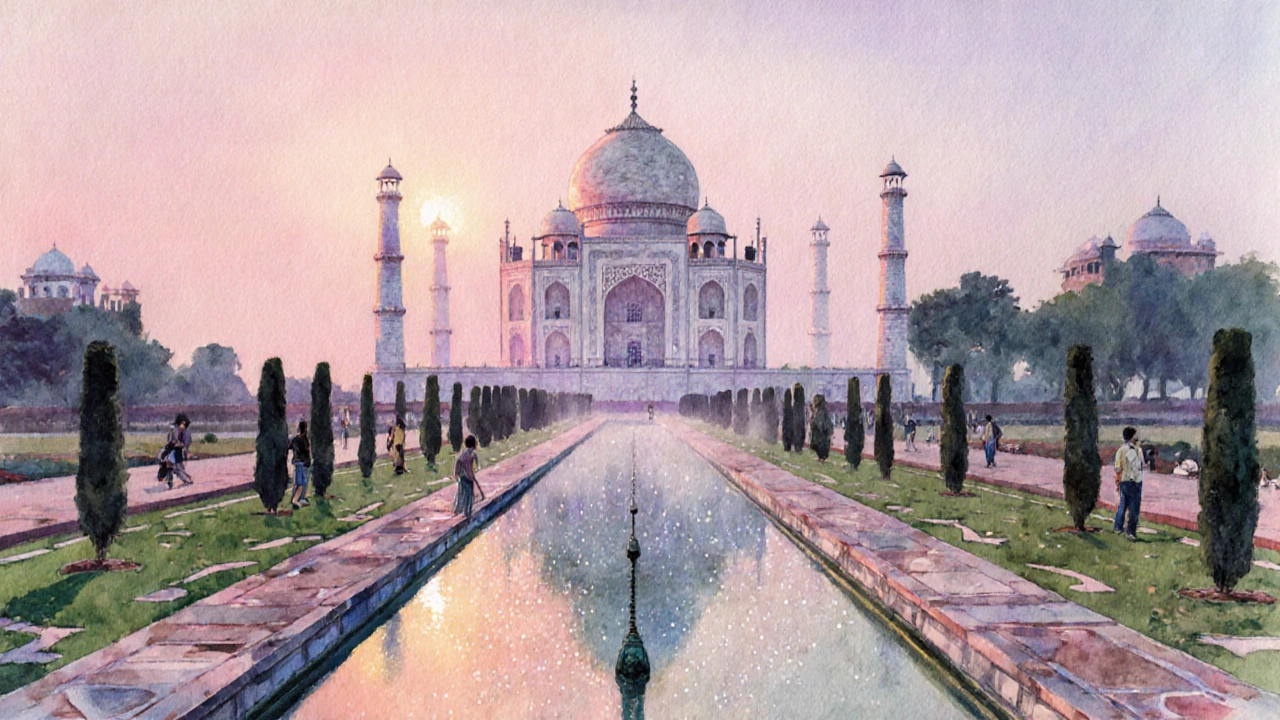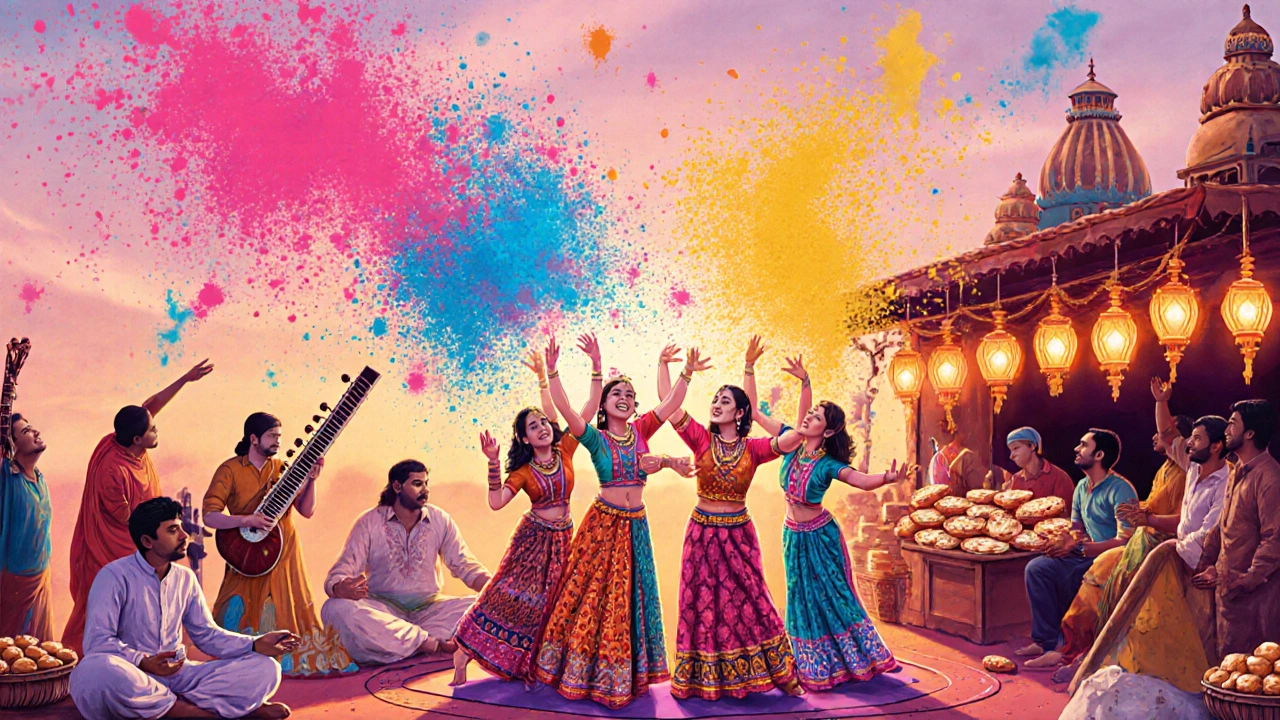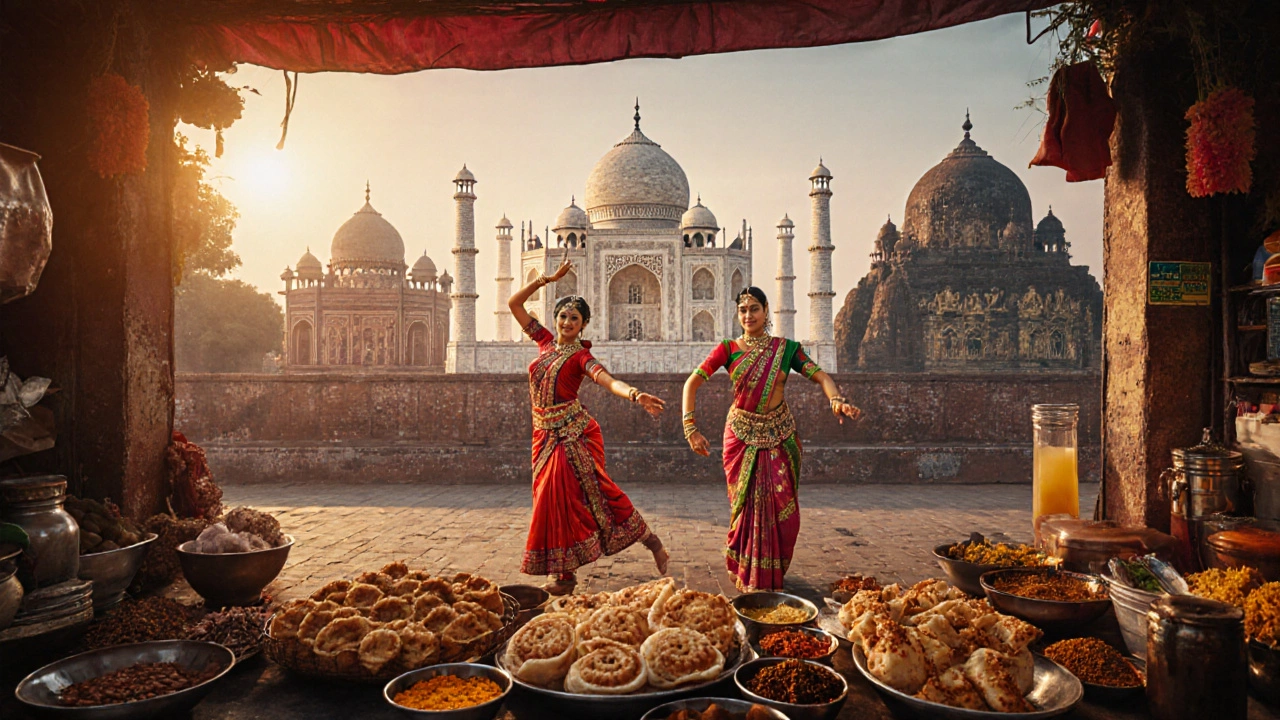When people talk about cultural heritage India, they’re not just pointing to a handful of famous monuments. It’s a living mosaic of monuments, art forms, languages, rituals and everyday practices that have shaped the subcontinent for millennia. In this guide we’ll break down what makes India’s cultural heritage tick, from UNESCO‑listed sites to the meals you’ll taste on a bustling street.
Defining the cultural heritage of India
Cultural heritage of India is a collection of tangible and intangible assets-monuments, traditions, languages, and knowledge systems-that reflect the country’s long‑standing history and diversity. It spans three millennia of empire, trade, religion, and artistic exchange. The heritage is protected under the Ancient Monuments and Archaeological Sites and Remains Act, and many parts are recognized by UNESCO as World Heritage properties.
Tangible heritage: monuments and sites
India boasts 42 UNESCO World Heritage Sites, split into cultural, natural and mixed categories. The cultural list includes the iconic Taj Mahal, a marble mausoleum that draws more than 7million visitors a year, and the rock‑cut marvels of the Ajanta Caves, which preserve some of the world’s oldest Buddhist paintings.
Other standout sites are the grand Mysore Palace, a showcase of Indo‑Islamic architecture, and the fortified cities of Rajasthan-Jaipur, Jaisalmer, and Udaipur-each a living museum of Rajput heritage. Together, these structures tell stories of empire, conquest, devotion and artistic brilliance.
| Type | Number of Sites | Example |
|---|---|---|
| Cultural | 30 | Taj Mahal |
| Natural | 9 | Western Ghats |
| Mixed | 3 | Khangchendzonga National Park |
These numbers show how heavily tilted the list is toward human‑made wonders, underscoring the depth of India’s built heritage.
Intangible heritage: arts, dance and festivals
Intangible heritage lives in daily practice. Classical dance forms such as Kathak-originating in North India-combine storytelling, intricate footwork and expressive gestures. In the South, Bharatanatyam’s precise geometry and devotional narratives offer a different flavor.
Music traditions range from Hindustani ragas to Carnatic compositions, each with its own set of scales, improvisation rules and spiritual intent. The country’s festival calendar reads like a cultural atlas: Diwali lights up the night sky with fireworks and oil‑lamp rituals, while Holi paints streets in a riot of colors, symbolizing the victory of good over evil.

Living traditions: yoga, Ayurveda and cuisine
Yoga is an ancient system of physical, mental, and spiritual practices that originated in India over 5,000years ago. Modern yoga studios worldwide trace their lineages back to sages who codified breath control (pranayama), postures (asanas) and meditation (dhyana). Parallel to yoga, Ayurveda is a holistic healing discipline based on balancing the three doshas-Vata, Pitta, and Kapha-to maintain health.
Indian cuisine mirrors the country's geographical and cultural tapestry. From the fiery chilies of Goa to the subtle mustard‑seed tempering of Bengal, each region showcases unique crops, spices and cooking methods. Street food staples like panipuri and dosa offer a quick, flavorful glimpse into local life.
Regional diversity: north, south, east and west
The north’s Himalayan monasteries preserve Tibetan Buddhist chants, while the desert state of Rajasthan thrives on folk music played on the sarangi and the storytelling tradition of the bards. In the east, Bengal’s Durga Puja blends art, sculpture, and communal feasting into a massive cultural event. The west’s coastal Konkan region boasts the ancient rock‑cut temples of Elephanta and a maritime trade legacy that introduced Portuguese and Arab influences.
Language is another corner‑stone of cultural heritage. Sanskrit, the classical language of ancient scriptures, still informs modern Indian literature and legal terminology. Regional languages like Tamil, Marathi, Bengali and Malayalam each carry their own oral epics, proverbs, and poetic forms, enriching the nation’s linguistic mosaic.

Preservation challenges and UNESCO’s role
Rapid urbanisation, climate change and tourism pressure threaten many heritage sites. The Archaeological Survey of India (ASI) works with UNESCO to monitor site conditions, enforce conservation guidelines, and promote sustainable tourism. For example, the Taj Mahal’s marble faces a yellowing problem caused by air pollutants; a joint effort introduced a low‑pressure water‑mist system to control humidity without harming the structure.
Community involvement proves vital. In villages surrounding the Hampi ruins, locals participate in heritage walks, sharing legends that add depth to the stone temples. When residents see tangible benefits-like increased income from guided tours-they become gatekeepers of their own history.
Experiencing India’s cultural heritage: a traveler’s checklist
- Plan visits to at least two UNESCO cultural sites from different regions (e.g., Taj Mahal in the north, Ajanta Caves in the west).
- Attend a regional festival; check dates for Diwali, Holi, or Durga Puja before you book.
- Take a guided walking tour that highlights intangible practices-dance performances, traditional cooking demos, or yoga sessions.
- Respect local customs: remove shoes before entering temples, dress modestly, and ask permission before photographing people.
- Support conservation by buying locally‑made crafts and donating to heritage‑preservation NGOs.
Following this checklist helps you see beyond the postcard and understand the layers of meaning that make India’s cultural heritage truly alive.
Frequently Asked Questions
What qualifies a site as part of India’s cultural heritage?
A site qualifies when it holds historic, artistic, or architectural significance that reflects the country’s past and is protected under national law or recognized by UNESCO.
How many UNESCO World Heritage Sites are in India?
India currently has 42 UNESCO World Heritage Sites, including 30 cultural, 9 natural, and 3 mixed properties.
Can I experience traditional Indian dance in small towns?
Yes. Many villages host seasonal performances of folk dances like Bhangra in Punjab or Garba in Gujarat, often tied to local festivals.
Is yoga still practiced in its original form?
Traditional yoga, known as ‘ragas’ or ‘hatha’, is still taught in ashrams and gurukuls across India, though many modern studios adapt the practice for global audiences.
What are the biggest threats to India’s heritage sites?
Urban expansion, air pollution, unmanaged tourism, and climate‑related damage (like rising sea levels affecting coastal monuments) are the most pressing challenges.
